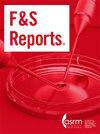How adaptive solutions from marine mammal life history could address pressing problems in reproductive biomedicine
IF 2.2
引用次数: 0
Abstract
Trends in modern society show an increase in maternal age due to deferred childbearing, and assisted reproductive technologies often make this possible. However, there are still numerous challenges in the field of reproductive health, ranging from conception to delivery and beyond. Wild animals may provide answers to some of the field’s pressing problems because these species have acquired adaptations to maximize reproductive output under some of the world’s most extreme conditions. Here, I focus on 3 key aspects of marine mammal life history that could provide significant insight into reproductive physiology and function for future study. First, marine mammals are fasting-adapted species that cease feeding activities during portions of their reproductive cycle. Strong selective pressures for lipid mobilization to support energetic demands during fasts result in reversible insulin resistance, similar to gestational diabetes mellitus. Second, marine mammals extensively forage as they recover from fasts, engaging in repeated, long-duration dives. This exposes the females and their pregnancies to prolonged hypoxia, extending far past the limits that human fetuses could withstand during delivery without hypoxic ischemic encephalopathy or asphyxiation. Finally, pinnipeds and polar bears use embryonic diapause to time birth with optimal conditions for successful offspring rearing. The ability to “pause” pregnancy until conditions improve could substantially enhance successful outcomes for assisted reproductive technologies in humans. Lessons learned from marine mammal physiology highlight the value in applying comparative studies toward a One Health approach in reproductive medicine.
海洋哺乳动物生活史中的适应性解决方案如何解决生殖生物医学中的紧迫问题
现代社会的趋势表明,由于推迟生育,孕产妇年龄增加,而辅助生殖技术往往使这成为可能。然而,在生殖健康领域,从受孕到分娩及以后的各个阶段,仍然存在许多挑战。野生动物可能会为该领域的一些紧迫问题提供答案,因为这些物种已经适应了在世界上一些最极端的条件下最大限度地提高生殖产量。在这里,我将重点介绍海洋哺乳动物生活史的三个关键方面,它们可以为未来的研究提供有关生殖生理和功能的重要见解。首先,海洋哺乳动物是适应禁食的物种,在部分生殖周期中停止进食活动。在禁食期间,为支持能量需求而动员脂质的强大选择性压力会导致可逆的胰岛素抵抗,类似于妊娠糖尿病。其次,海洋哺乳动物在禁食后的恢复过程中会大量觅食,进行反复、长时间的潜水。这使雌性海洋哺乳动物及其胎儿长期处于缺氧状态,远远超过了人类胎儿在分娩过程中在不发生缺氧性缺血性脑病或窒息的情况下所能承受的极限。最后,针脚类动物和北极熊利用胚胎休眠期来确定分娩时间,为成功哺育后代创造最佳条件。在条件改善之前 "暂停 "怀孕的能力可大大提高人类辅助生殖技术的成功率。从海洋哺乳动物生理学中汲取的经验教训凸显了将比较研究应用于生殖医学 "统一健康 "方法的价值。
本文章由计算机程序翻译,如有差异,请以英文原文为准。
求助全文
约1分钟内获得全文
求助全文

 求助内容:
求助内容: 应助结果提醒方式:
应助结果提醒方式:


